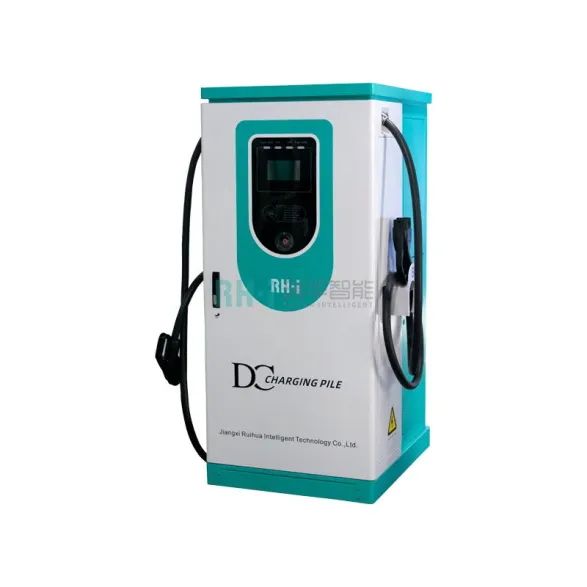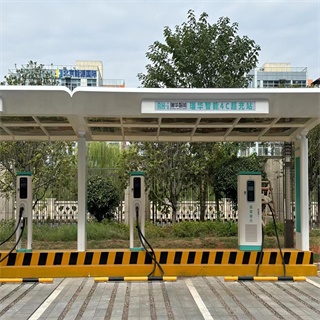Level 3 DC Fast Charger, DC Fast Charging Station
A Level 3 DC Fast Charger is a high-powered charging station designed to rapidly charge electric vehicle (EV) batteries, providing a significant advantage over Level 1 and Level 2 chargers in terms of speed. Unlike the more standardized connectors for Level 1 and Level 2 chargers, which typically use the SAE J1772 or “J Plug,” Level 3 chargers use one of three distinct types of connectors, depending on the manufacturer and region. These include:
- Tesla proprietary plug: Used for Tesla vehicles, requiring a specific adapter for compatibility with other stations.
- CHAdeMO plug: A fast-charging standard widely used by Japanese automakers, including Nissan and Mitsubishi.
- Combined Charging System (CCS) plug: Also known as “Combo,” this system is compatible with many European and American vehicles and is part of the SAE J1772 standard.

80kw DC Fast Charger Level 3 for Sale
80kw level 3 DC fast charger is the electric vehicle charging power supply used for the distributed charging network of electric vehicles, It can quickly and effectively deploy the charging network, providing high-power fast charging services for electric vehicles.
The 80kw level 3 DC fast charging station can achieve functions, such as IC card management, LCD display, charging and billing, charging management, remote communication…etc. It transmits operating data (including billing information) to the server backend. Through the backend master station, the administrator can monitor the operation of the charging station in real-time, providing guarantee for the good operation of the system.
80kw DC EV Charger is the electric vehicle charging power supply used for the distributed charging network of electric vehicles, It can quickly and effectively deploy the charging network, providing high-power fast charging services for electric vehicles. The high-power outdoor integrated DC charger consists of a charging connection device, a rectifier module, and a charging control and billing system. Each rectifier cabinet is equipped with 10pcs of 15kW high-voltage DC charging modules, which’s suitable for the operation and use of urban transportation charging stations, highway charging stations, enterprise dedicated parking lots, and other places.
| Power supply | 3P+N+PE |
| Rated Voltage | 400VAC±15%(50/60Hz) |
| THDI | ≤5% |
| Efficiency | ≥95% |
| Power Factor | ≥0.98 |
| Connector Type | GB/T, CCS1, CCS2 |
| Output Voltage | 150-1000VDC |
| Maximum Output Current | 200ADC |
| Output Power Rating | 60KW/120KW/160KW/180KW |
| Output Voltage Accuracy | ≤0.5% |
| Output Current Accuracy | ≤±5% |
| LCD | 7” Touch LCD Screen |
| Payment Mode | RFID Card |
| Cable Length | 5m |
| Network Connection | Cellular modem:GSM/3G/4GLAN:10/100 Base-T Ethernet |
| Communication Protocal | OCPP 1.6J |
| Operating Noise Level | ≤60dBA |
| Ingress Protection(IP/IK rating) | IP65/IK10 |
| Power Meter | Accuracy Class 1 energy meter |
| Enclosure | Galvanized steel |
| Product Dimension | 1780*800*950mm(H*W*D) |
| Certification Standard | IEC 61851-1:2017, IEC 61851-23:2014, EN 61851-24:2014,EN 61851-21-1:2018 |
| Operating Temperature | -20℃~+55℃ |
| Storage Temperature | -40℃~+85℃ |
| Maxmium Installation Height | ≤2000m |
| Operating Humidity | 5%-95%RH |
How many kW is a Level 3 charger?
The key feature that distinguishes Level 3 chargers is their ability to deliver direct current (DC) directly to the vehicle’s battery, unlike Level 1 and Level 2 chargers that use alternating current (AC). This direct supply allows for much faster charging speeds, typically ranging from 50 kW to 350 kW. This translates to a significant reduction in charging time, allowing an EV to reach up to 80% charge in 30 minutes or less, depending on the charger’s power output and the vehicle’s battery size.
The current and kilowatt capacity are the driving forces behind the speed of Level 3 chargers. A higher kilowatt output means more power is delivered to the battery in a shorter period, allowing for faster charging.
While the specific names for Level 3 chargers may vary (such as Tesla Supercharger or DC Fast Charger), the primary distinction lies in the technology behind these fast chargers, which is crucial for the growing network of public charging stations, especially for long-distance EV travel.
How much does a Level 3 charger cost to install and operate?
The cost to install and operate a Level 3 EV charger (DC Fast Charger) is significant and involves several factors:
- Charger Cost: The hardware for a DC Fast Charger typically costs $30,000 to $100,000 per unit. For large-scale deployments, some systems may cost upwards of $1 million USD depending on the order size and the charging power.
- Installation Cost: Installation costs can vary based on the existing electrical infrastructure. If upgrades are needed to support the charger, costs can increase significantly. Installation typically ranges from $10,000 to $50,000 per charger, but it can be higher for complex locations or major infrastructure upgrades.
- Electricity Costs: The operational cost for electricity depends on local power rates, typically around $0.10 to $0.30 per kWh. This cost will fluctuate depending on the time of day and season. To optimize energy usage, investing in smart power management software can help reduce costs.
- Total Estimate: For a single Level 3 charger, the initial installation and hardware costs can range from $40,000 to $200,000. Ongoing operational costs (electricity and maintenance) will add to the total cost over time.
To maximize your investment, it is recommended to place Level 3 chargers in high-traffic locations, such as highway exits or busy commercial areas, to ensure better returns.




